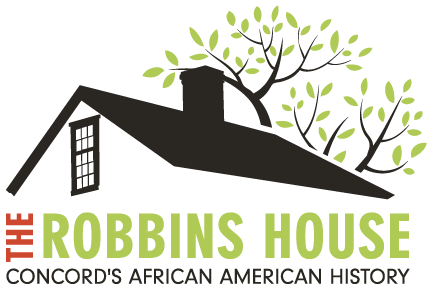The Robbins House
Pathways to Independence
This 544-square-foot house, built in the early 1820s, was originally located on an isolated farm overlooking the Great Meadows along the Concord River. The first two families who lived here were descendants of Caesar Robbins, a Revolutionary War Patriot. In 1823, Caesar’s son Peter Robbins purchased the new two-room house and over thirteen acres for $260. Peter and his wife Fatima resided in the west side of the house; Peter’s sister, Susan, her husband Jack Garrison, and their children occupied the east side. Peter Hutchinson, Fatima’s relative, bought the house in 1852. He and his large family were the last to live in this house on the farm.
Power of Self-Determination
In 2010, the house was saved from demolition, moved here, and restored. Today, The Robbins House embodies the determination of Caesar Robbins and his family to support themselves on the land and to shape their own destinies as free men and women—and serves to inspire conversations about race and social justice issues1.
Want to engage in Concord’s African-American and antislavery history? Visit The Robbins House today, experience state-of-the-art exhibits, and learn about Concord’s lesser-known early inhabitants from knowledgeable and passionate interpreters. The Robbins House was once home to several generations of Concord’s free African-Americans; today, we are lucky enough to use the space within its walls to learn their stories and better understand our history.
Thank you for educating yourself about Concord’s African-American and anti-slavery history.
Works Cited
1 “Learn the History – the Robbins House.” The Robbins House, 12 Apr. 2021, robbinshouse.org/learn/. Accessed 5 Sept. 2023.
This audio excerpt was created and recorded under the leadership of CCHS student Grady Flinn. He also created a plaque for the Brister Freeman Family Home Site, and the Cuba Plantation Bell.









